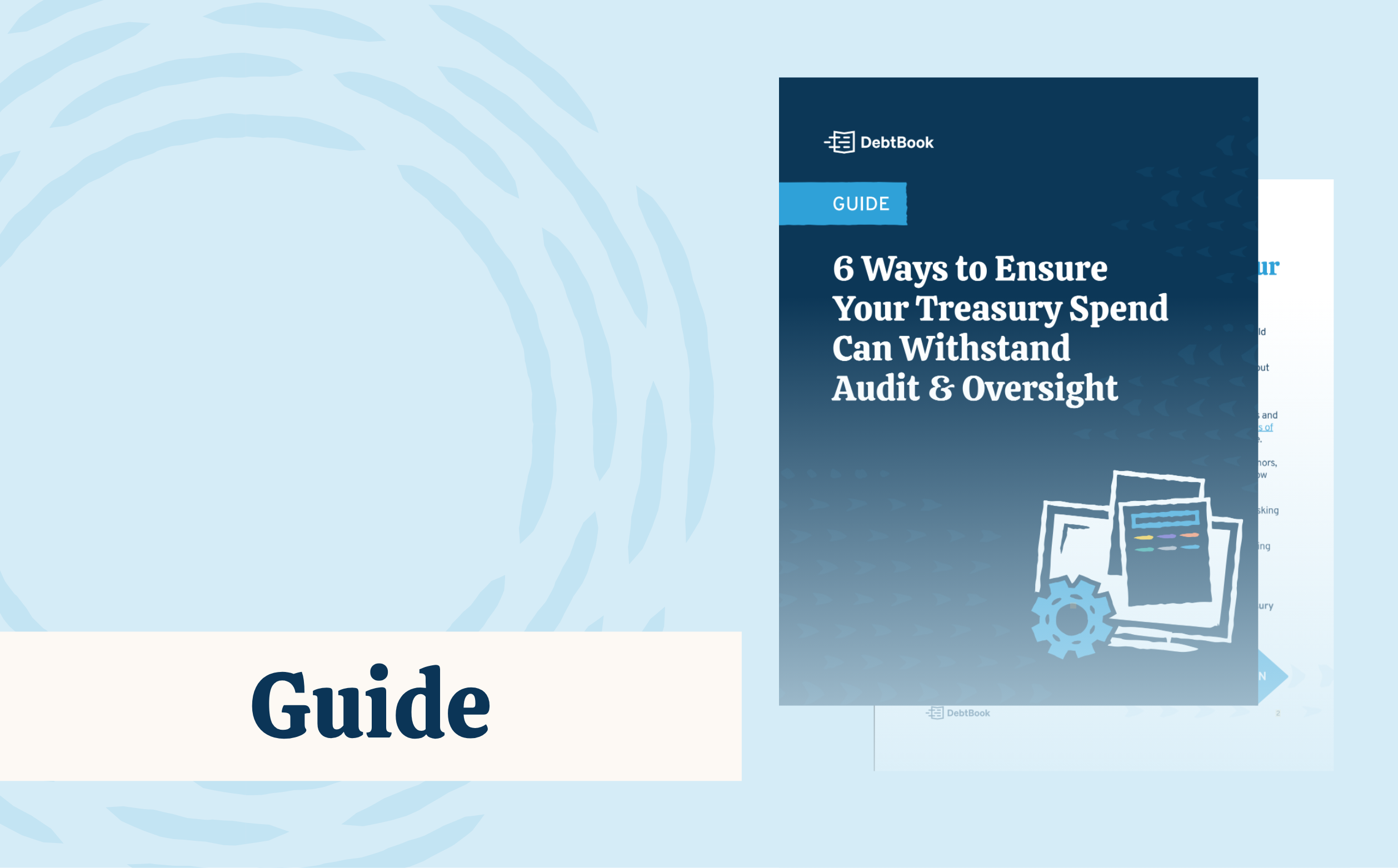For government and nonprofit organizations understanding and managing your earnings credit rate isn’t just important, it’s essential. While it might seem like just another line item, the earnings credit rate plays a crucial role in helping organizations like yours offset bank fees and manage cash efficiently.
Think of it as your bank’s way of giving you credit for keeping balances with them. It’s a tool that can save your organization money, but only if you know how to make it work in your favor.
From reducing overhead to maximizing the value of your deposits, negotiating a better earnings credit rate can have a tangible impact on your financial health. Yet, many organizations leave money on the table simply because they don’t fully understand how to evaluate or negotiate their rate.
That’s where this blog comes in. Our goal is to explore the earnings credit rate and give you the tools you need to:
- Assess your current rate: Is your earnings credit rate competitive, or are you getting shortchanged?
- Negotiate for a better deal: Learn how to approach your bank and make a compelling case for improvement.
- Analyze the benefits: See the real-world impact of a stronger earnings credit rate on your bottom line.
What is the Earnings Credit Rate?
The earnings credit rate, or ECR, is a percentage rate your bank applies to the balances in your accounts to calculate credits. These credits are then used to offset fees for various banking services, like account maintenance or transaction processing.
In other words, it’s how your deposits work for you.
How Does the ECR Work?
Here’s how it typically plays out:
- Your bank looks at your account’s average collected balance (essentially the funds you consistently maintain).
- They apply the ECR to that balance to determine the amount of credit you earn.
- That credit is subtracted from your monthly service charges, lowering your out-of-pocket banking costs, until your fees are fully offset.
- Once your fees are fully offset with your earnings credit, you stop receiving any additional credits.
For example, if you maintain an average balance of $500,000 in the month of November and your ECR is 2.00%, you’d earn $849.32 in earnings credit that month. These credits can go a long way in offsetting fees, especially for organizations with high account activity.
Why Does the ECR Matter for Government and Nonprofit Organizations?
The ECR offers a way to reduce operating costs without cutting into program funding or service delivery. Since government and nonprofit organizations often hold significant cash reserves to manage grants, tax revenues, or program funding cycles, maximizing the ECR can turn those deposits into a valuable asset.
The key is ensuring your ECR is competitive and aligns with market conditions. Unfortunately, many organizations don’t realize they’re leaving money on the table at a suboptimal rate, or even that they can negotiate for a better one.
What Influences the ECR?
Several factors determine the ECR your bank offers:
- Market Interest Rates:
Traditionally, banks will offer ECRs up to the lower bound of the Fed Funds Rate. As rates go up, there is more opportunity to request your ECR moves in line with those rate increases. - Deposit Levels:
Higher account balances typically result in a better ECR, as banks benefit from having access to more of your funds. - Bank Policies:
Each institution has its own approach to setting ECRs, which may depend on their profitability goals or client relationships.
Strategies for Negotiating a Better Earnings Credit Rate with Your Bank
Negotiating your earnings credit rate can feel daunting, but the reality is banks expect these conversations—especially from organizations that maintain strong account balances.
The key is preparation. By showing your bank the value of your relationship and understanding how to advocate for your needs, you can make a compelling case for a better rate.
Here’s how to approach the process step by step:
1. Prepare Your Case
- Gather Key Data:
Start by compiling details on your average account balances, transaction volumes, and any seasonal fluctuations. This gives the bank a clear picture of your financial activity and demonstrates the consistent value you bring. - Document the Impact:
Calculate how a higher ECR would benefit your organization. For example, show how an increase from 0.75% to 1.00% could save thousands of dollars annually in banking fees. Having concrete numbers shows you’ve done your homework and highlights why the bank should work with you. - Discuss the Relationship:
It’s important to highlight the relationship you’ve had with your bank and how long you’ve been a customer. If you’ve done a recent RFP, reference the proposal made by the bank to be awarded your business. If you haven’t done an RFP recently, highlight reasons why such as the strong partnership or how happy you’ve been with their service.
By treating them as a partner to your organization vs a vendor, banks are more likely to work with you on negotiating a rate that is mutually beneficial for both organizations.
2. Engage Your Bank
- Initiate the Discussion:
Reach out to your bank representative with a request for a meeting to discuss your ECR. Be transparent—state that you’ve reviewed your current rate and would like to explore ways to make it more competitive. - Highlight Your Value:
Make sure the bank understands how important your relationship is to them. Point out factors like:- The size and stability of your deposits.
- The history of your relationship with the bank.
- The potential for growth in your account activity.
3. Negotiate Effectively
- Leverage Competitive Offers:
If you’ve done your research, you’ll know what rates other banks are offering organizations like yours. Use this information to show your bank what’s available elsewhere and why they need to match or exceed it to keep your business. - Anticipate Objections:
Banks may push back with explanations like “our rates are standard” or “market conditions limit flexibility.” Be ready to counter these points by emphasizing your value and demonstrating how the requested adjustment is reasonable based on market benchmarks.Final Tip: Build a Win-Win Relationship
Remember, banks value long-term relationships with clients who bring stability and growth. Position your negotiation as a partnership aimed at mutual benefit. With the right preparation and mindset, you can secure a higher ECR that makes a real difference for your organization’s financial efficiency.
How to Assess Your Current Earnings Credit Rate
Before you can negotiate for a better earnings credit rate, you need to understand where you currently stand.
Here’s how to break it down:
1. Start with Your Bank Account Analysis Statement
Your bank account analysis statement is a goldmine of information, but it can also feel overwhelming. Focus on finding the section that outlines your ECR. It will typically show the credit your bank provides on your balances to offset fees.
Review this carefully, and take note of:
- The rate itself (often expressed as a percentage).
- How much of your fees are being offset by the credit.
- Any patterns or inconsistencies in your monthly statements.
2. Compare Your ECR to Benchmarks
Once you know your ECR, the next question is: How does it stack up?
Compare your rate to industry benchmarks or relevant financial indicators, like the Federal Funds rate or even from what your peers are receiving. A competitive ECR should generally align with broader market trends. If your rate seems unusually low, it might be time to start asking questions.
Pro tip: Look at what similar organizations in your sector are experiencing. This can be a useful benchmark when negotiating with your bank.
3. Leverage the Right Tools and Reports
Don’t do the heavy lifting alone. Tools like DebtBook’s Cash Management solution can simplify the math, helping you see exactly how much you’re saving (or could be saving). This solution is especially helpful if you’re analyzing multiple accounts or comparing rates across banks.
Additionally, work with reports that provide historical trends in your balances and fees to spot areas where you might negotiate improvements.
4. Ask the Right Questions
As you review your ECR, it’s important to approach your bank with informed, targeted questions:
- Is my ECR competitive compared to the current market?
- Are there ways I can increase my rate, such as maintaining higher balances or bundling services?
- What specific fees are offset by my ECR, and what isn’t covered?
- Can you provide a breakdown of how my ECR is calculated?
Once you’ve completed this assessment, you’ll not only have a clear understanding of your current ECR but also be armed with the knowledge you need to start negotiating.
After all, when it comes to your organization’s finances, every percentage point matters!
Analyzing the Benefits of the ECR to Your Organization
Once you’ve successfully improved your ECR, it’s time to evaluate how the change impacts your bottom line.
Let’s walk through the process of calculating these benefits and understanding their broader implications.
Calculating Potential Savings
An improved ECR directly affects how much of your bank fees are offset, meaning less money out of pocket for your organization.
Here’s a simple formula to estimate your potential savings:
Earnings Credit = Average Balance × ECR × (Days in Period ÷ 365)
For example:
If your average balance is $1 million, your current ECR is 0.50%, and the billing period is 30 days:
$1,000,000 × 0.005 × (30 ÷ 365) = $410 in credits
Now, imagine you successfully negotiate your ECR up to 0.75%:
$1,000,000 × 0.0075 × (30 ÷ 365) = $615 in credits
That’s an extra $205 per month, or $2,460 annually—real money that can go back into supporting your operations or funding new initiatives.
Try our earnings credit calculator for treasury and finance teams.
Financial Outcomes: What to Expect
- Lower Bank Fees:
With a higher ECR, you’ll offset a greater portion of your monthly fees, potentially eliminating some entirely. This allows you to redirect those savings toward mission-critical activities instead of operational overhead. - Increased Operational Funds:
Every dollar saved in fees is a dollar that can remain in your accounts, earning interest, or being reinvested in your organization’s goals. For government agencies and nonprofits, this can mean more resources for public services or programs.
How an Improved ECR Boosts Your Cash Management Strategy
Beyond the immediate financial impact, a better ECR enhances your organization’s overall cash management.
Here’s how:
- Optimized Cash Utilization:
Higher earnings credits mean your cash reserves are working harder for you, reducing the need to draw on other funding sources for operating expenses. - Improved Budget Planning:
With reduced fees and predictable credits, you’ll have greater visibility into your banking costs, making it easier to forecast and manage budgets. - Enhanced Financial Flexibility:
The savings generated by a higher ECR can be reinvested into other areas, whether it’s maintaining liquidity for short-term obligations or funding long-term projects.
When to Reassess and Renegotiate
Like many aspects of financial management, your ECR should be reviewed regularly to ensure it continues to meet your organization’s needs. Whether it’s due to market changes or shifts within your organization, knowing when to reassess and renegotiate your rate is key to maximizing its benefits.
Situations that Warrant Revisiting Your ECR
- Changes in Market Conditions:
When interest rates rise or fall, banks often adjust their ECR offerings to reflect market trends. For example, a period of rising Federal Funds rates might provide an opportunity to push for a higher ECR. Stay informed about these shifts and how they impact your rate. - Organizational Growth or Shifts in Balances:
Significant changes in your organization’s financial activity (like larger deposits, higher transaction volumes, or growth in programs) strengthen your negotiating position. If you’ve increased your average balances or expanded your banking relationship, it’s worth revisiting your ECR to ensure it reflects the increased value you bring to the bank. - Periodic Reviews:
Set a schedule (annually or biannually, for example) to evaluate your rate, assess its competitiveness, and prepare for renegotiation if necessary. Think of it as a financial check-up for your banking relationship.
Reassessing and renegotiating your ECR is an ongoing process, but it doesn’t have to be overwhelming. When you keep an eye on market conditions, you can better understand your organization’s evolving needs, and by maintaining a strong relationship with your bank, you can ensure your ECR consistently delivers maximum value.
Unlock Strategic Cash Management with DebtBook
Managing your earnings credit rate is just one piece of the larger puzzle in optimizing your organization’s cash management. With DebtBook’s Cash Management solution, you can take your financial operations to the next level.
Designed specifically for government and nonprofit organizations, DebtBook’s platform empowers treasury teams to streamline workflows, improve financial performance, and minimize risk—all while gaining full visibility and control over cash flow.
DebtBook’s modern, purpose-built tools help eliminate the inefficiencies of outdated spreadsheets and scattered data. From automating daily cash positioning to building accurate cash forecasts and reducing fraud risk, the platform ensures your team can focus on strategic decision-making rather than time-consuming manual processes.
With features like real-time monitoring, enhanced data confidence, and bank fee analysis, DebtBook helps uncover hidden savings, improve liquidity, and boost your earnings credit.
Ready to transform how you work? Schedule a demo today and discover how DebtBook’s Cash Management solution can help your organization achieve smarter, more strategic financial success.
Related Cash Management Reading
- Common Bank Reporting & Payment File Formats for Treasury
- How Cash Forecasting Boosts Creditworthiness & Lowers Borrowing Rates
- [FREE DOWNLOAD] Cash Position Worksheet for Treasury
Disclaimer: DebtBook does not provide professional services or advice. DebtBook has prepared these materials for general informational and educational purposes, which means we have not tailored the information to your specific circumstances. Please consult your professional advisors before taking action based on any information in these materials. Any use of this information is solely at your own risk.








